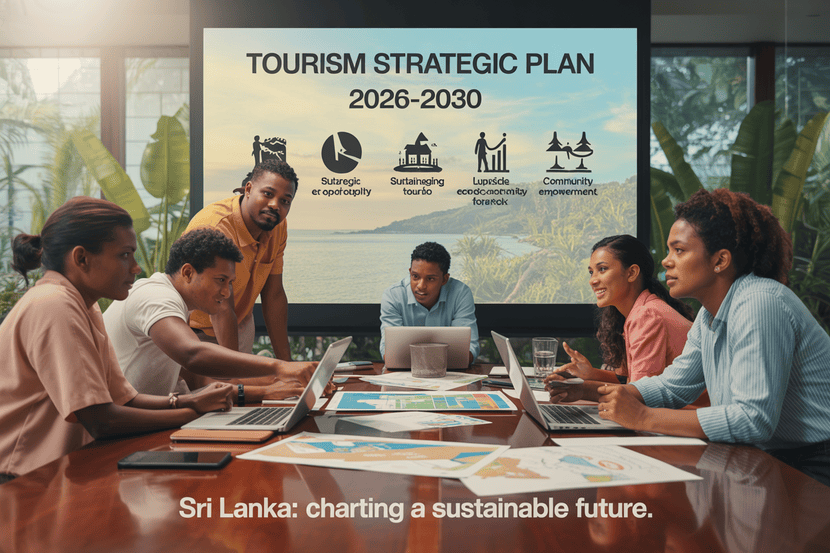≡-Rome, Barcelona, and Iceland: How the World is Tackling Overcrowded Tourist Destinations with Smarter Management – Viral of Today
<> Viral of Today <>
Home
»
Belgium Travel News
»
Rome, Barcelona, and Iceland: How the World is Tackling Overcrowded Tourist Destinations with Smarter Management
Monday, July 14, 2025
Tourism is a powerful economic driver, but its rapid growth has resulted in significant challenges for destinations worldwide. In cities like Rome, Barcelona, and Iceland, where millions of tourists flock each year, overcrowding has become a pressing issue. The effects are far-reaching, affecting local communities, economies, and the environment. With global travel set to contribute nearly $11 trillion to the world economy in 2024, the need for smarter, more sustainable tourism management has never been clearer.
A recent report from the World Travel & Tourism Council (WTTC) urges destinations to adopt strategic, long-term solutions to address the strain caused by mass tourism. The report, unveiled ahead of the 25th Global Summit in Rome, outlines six practical steps to better manage tourism and protect both the cultural and economic vitality of these destinations. The urgency for coordinated planning is more apparent than ever, as poor infrastructure, inadequate planning, and a lack of stakeholder coordination only exacerbate the challenges.
This article delves into the WTTC’s recommended approach, highlighting how tourism hotspots such as Barcelona, Iceland, Flanders, and Dubrovnik are leading the way in addressing these issues. From proactive planning and data-driven policies to empowering local communities, these destinations are setting benchmarks for others to follow.
Overcrowded Tourist Destinations: The Growing Problem
Tourism is a double-edged sword. While it injects money into local economies and supports millions of jobs, it can also lead to overtourism—a condition where visitor numbers overwhelm a destination’s infrastructure, environment, and residents. The WTTC report points out that the surge in tourism is not only about the increasing number of visitors, but also about deeper systemic issues that need addressing. These include:
Weak infrastructure: Inadequate roads, public transport, and facilities that cannot handle the influx of tourists.
Poor planning: Short-term, reactive policies that fail to anticipate and manage long-term growth.
Limited coordination: Lack of communication between governments, businesses, and local communities, leading to inefficiencies in resource allocation.
These challenges, if left unchecked, threaten to undermine the benefits of tourism and damage both the social fabric of local communities and the environment. According to WTTC, failing to address these underlying issues could result in economic losses amounting to $245 billion in GDP and the loss of nearly 3 million jobs in some European cities over three years.
The WTTC’s Six-Step Plan for Smarter Tourism Management
The WTTC’s six-step plan is designed to provide a comprehensive roadmap for destinations looking to manage tourism sustainably while preserving their cultural and economic value. Here’s a breakdown of the steps:
Get Organised: Establish Stakeholder TaskforcesA coordinated effort is essential for tackling the complexities of tourism management. Local authorities should establish taskforces that include representatives from all sectors involved in tourism, such as government agencies, hospitality providers, transport operators, and local community leaders. These taskforces should have decision-making authority to implement and monitor tourism policies effectively.
Make a Plan: Develop a Shared Vision for Tourism GrowthA clear, long-term vision for tourism development is necessary to balance growth with sustainability. Stakeholders should come together to create a shared plan that outlines goals, priorities, and strategies for managing tourism while benefiting both visitors and locals.
Gather the Evidence: Use Data to Identify ChallengesLocal data is crucial for understanding the specific challenges faced by each destination. Authorities should invest in data collection and analytics to monitor visitor patterns, identify stress points, and tailor solutions to address issues such as overcrowding, environmental degradation, and infrastructure strain.
Stay Vigilant: Monitor and Respond ProactivelyTourism trends are constantly evolving, and early intervention is key to preventing issues from spiraling out of control. Destinations must establish mechanisms to monitor trends and respond proactively to early signs of pressure, whether it’s an increase in visitor numbers, environmental impact, or social tensions.
Invest Wisely: Strengthen Infrastructure and ResilienceLong-term investments in infrastructure are critical to supporting sustainable tourism. Governments must allocate funds to strengthen resilience—upgrading transportation, waste management, and public amenities to handle tourist traffic without compromising local quality of life.
Empower Residents: Engage Local Communities in Decision-MakingLocal communities are at the heart of tourism, and their involvement in decision-making ensures that tourism policies reflect their needs and priorities. By empowering residents to actively participate in tourism planning, destinations can create policies that are both effective and socially equitable.
Case Studies: Effective Destination Management in Action
The WTTC report includes several examples of destinations that have successfully implemented these strategies, demonstrating that proactive, coordinated efforts can lead to sustainable tourism. These case studies provide valuable insights for other destinations grappling with similar challenges.
1. Barcelona: A Public-Private Partnership for Sustainability
Barcelona’s approach to managing tourism is a model of public-private collaboration. Through a public-private consortium, the city has aligned tourism policies with sustainability goals, focusing on reducing environmental impact and improving the quality of life for residents. Barcelona has implemented measures to limit over-tourism in popular areas while promoting lesser-known attractions.
2. Flanders: Aligning Tourism with Community Priorities
In Flanders, Belgium, tourism has been integrated into community development through the “Travel to Tomorrow” strategy. This initiative ensures that tourism supports the region’s social, cultural, and environmental priorities. By aligning tourism with community goals, Flanders has cultivated a more inclusive and sustainable approach to tourism.
3. Dubrovnik: Cruise Ship Coordination to Reduce Congestion
The Croatian city of Dubrovnik has implemented a strategy to coordinate cruise ship arrivals, reducing the congestion caused by large volumes of visitors arriving at the same time. By staggering arrivals and improving communication between port authorities and tourism operators, Dubrovnik has successfully managed cruise tourism without overwhelming its infrastructure.
4. Iceland: Tourism Revenue for Environmental Protection
Iceland has taken a bold step by channeling tourism revenue into environmental protection. The country has directed funds into preserving its unique landscapes, supporting conservation projects, and maintaining sustainable infrastructure. This approach not only mitigates the environmental impact of tourism but also ensures that Iceland’s natural wonders remain intact for future generations.
The Future of Sustainable Tourism
As global travel continues to grow, it is crucial that tourism destinations adopt these data-driven, community-focused policies to ensure the long-term viability of their tourism industries. The WTTC’s recommendations provide a practical framework for managing destination overcrowding, ensuring that tourism can remain an engine for economic growth without sacrificing the well-being of local communities or the environment.
By planning ahead, investing in infrastructure, and engaging local communities, destinations can strike a balance between economic prosperity and environmental sustainability, preserving their unique cultures and landscapes for future generations.
Conclusion: Moving Toward Smarter, Sustainable Tourism
With increasing pressures on tourist hotspots worldwide, the time has come for destinations to adopt smarter, more sustainable management practices. The WTTC’s six-step plan offers a proven framework that addresses the root causes of overcrowding, ensuring that tourism benefits both visitors and residents. Through proactive planning, coordination, and investment in local communities, global destinations can pave the way for a more sustainable future in tourism.
Tags: Barcelona, Belgium, Croatia, Destination Overcrowding, dubrovnik, flanders, Iceland, rome, spain, sustainable tourism, tourism management, Travel & Tourism Global Summit, World Travel & Tourism Council
This information will surprise you!
See also
- Read until the end to discover everything.
- Important information you need to know.
- Interesting facts and helpful tips.
Conclusion
Did you enjoy the news? Keep following us daily!













